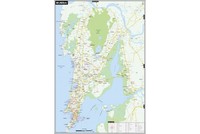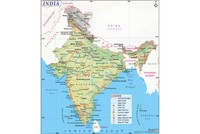On the wintery evening of 21 February 2013, the city of Hyderabad came to a standstill when two bomb blasts shook it to the core. The citizens, caught completely unprepared for the tragedy, could only witness the carnage with a bereaved heart. The bombs were placed in the most crowded areas of the city to maximise damage. Despite the strong security that the Hyderabad city boasts of, the bombs proved that the ordinary citizen could never feel completely safe.
What happened and how
On 21 February, 2013, when the blasts terrorised the city, it was 7 pm by the clock. The bombs were planted in Dilsukhanagar, which is one of the most crowded shopping areas in the city. They were kept 100 metres apart from each other. The first one exploded outside A1 Mirchi around 7:02 p.m. IST, which is a roadside eating place close to the famous Anand Tiffin Centre, right opposite to the Konark cinema hall. The second one went off just after four minutes, around 7:06 p.m. IST, at the Route 107 Bus Stand near the Venkatadri Theatre. These areas are located within the reach of the Cyberabad police, on the national highway of Hyderabad-Vijaywada. The twin blasts were suspected to be triggered by IED or Improvised Explosive Devices, kept on two bicycles. Records confirm that the disaster killed around 17 people and injured around 120.
Scenario following the disaster
The explosions triggered a massive carnage and chaos among the people present there and immediately a stampede-like situation was created. People started running for their lives, surrounded by scattered dead bodies and pools of blood. The adjoining areas were full of footwear and other remnants, with injured people crying for their loved ones. The injured were immediately rushed to the nearby hospitals and given first aid.
Investigation
Within a week of the massacre, the DG of Andhra Pradesh police declared that the sketches of the suspects had been prepared with the help of eye witnesses and CCTV footage. Initially the police had suspected some new terrorist groups to be behind the attack, but as the NIA (National Investigation Agency) joined the investigating team, traces of the involvement of Indian Mujahideen were found. In the first phase of investigation, two suspects by the name of Syed Maqbool and Imran Khan, who were active members of the group, were detained for interrogation. The NIA confirmed that the duo operated under the instructions of the founder of Pakistan-based IM, Riyaz Bhatkal. Rigorous interrogation revealed their plans of carrying out similar blasts in Hyderabad as well as other parts of India. Soon warrants were issued against the names of Riyal and his associates like Yasin Bhatkal. After a series of interrogations and operations, Yasin Bhatkal was arrested in August 2013, who showed no regret on his face for the massacre. He admitted later that he was instructed from Pakistan to bomb the city and confessed his involvement in supplying materials for planting the bombs along with one of his close associates, Asadullah Akhtar. He was sent in punishable judicial remand till mid-October. Their custody was extended till 28 February 2014 by a special court.
Reactions and responses
Manmohan Singh heavily condemned the dual blasts, declaring that immediate steps would to be taken to punish the guilty. Compensation was announced by the central as well as state government for the affected. Several tweets and messages from Bollywood celebrities like Amitabh Bachchan, Vivek Oberoi and many more followed, consoling the people and demanding that the culprits be put behind the bars soon.
Also on this day:
1878 – Mirra Alfassa, Indian spiritual leader, was born
1896 – Suryakant Tripathi, Indian poet, was born
1980 – Parthiva Sureshwaren, Indian race car driver, was born
1991 – Nutan Behl, Indian actress, died








